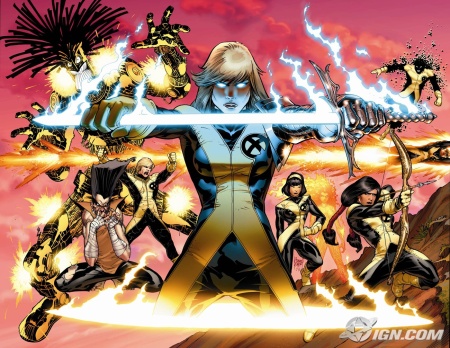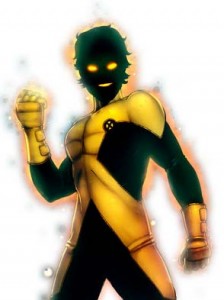New Mutants, Old Friends
As seen on the big screen, the X-Men save the world from vicious villains, bloodthirsty bigots and evil mutants galore. But they live at a school. Huh? Like most kids, school was the largest part of my life, and I cared about the idea of a super-school. So too, it turns out, did Chris Claremont, the longest running X-Men writer. First appearing in 1982, the New Mutants were a group of eight young student mutants who, among other more heroic things, lived and went to school at Xavier’s School for Gifted Youngsters.
I grew up with these kids. They struggled with Algebra, I struggled with Algebra. They did chores, I did chores. They went on star-hopping adventures through time, I…read about it. But no matter the adventure, the story was always rife with adolescent angst, drama, struggle and internal conflict that either mirrored or (more often) magnified my own. Eventually they grew, as I did, and moved on to other teams just as I moved on to college. Thus the least creatively titled comic in the Marvel Universe ended.
I kept in touch with a few of them, though some just dropped off the grid, as some friends do after high school. There was one half-hearted, poorly handled attempt at a reunion. Until last May, when Zeb Wells re-started the book for Marvel, and did an amazing thing; just picked them up from where they were in comic life and brought them back together. He didn’t re-write them, or re-imagine them (read: ruin and intellectually ruin), he simply treated them like people.
Recently, one of my real-life high school friends hooked me up with the first story in the new New Mutants series. Short answer, I loved it. Long answer, Mr. Wells’ respectful handling of each character’s history, and the history of the team, allows for an interesting comparison of how my six old friends have grown up and overcame, adapted to, or internalized the issues which they struggled with as teenagers, using Erik Erikson’s model of Adolescent Milestones as a basis for comparison.
According to Erikson there are six categories of milestones which each person would hope to cross in their move from adolescence to adulthood; Physical Growth, Intellectual Growth (or Cognition), Autonomy Establishment, Body Image Acceptance, Peer Group Differentiation and Identity Development. Six friends, six categories, should be simple, right? Well, yes but talking about their physical growth is boring. Two of my friends will double up on a category, but that’s to be expected since each category covers a multitude of milestones.
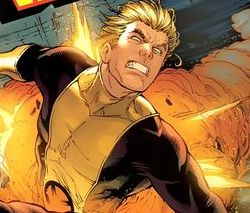 Sam Guthrie a.k.a. Cannonball
Sam Guthrie a.k.a. Cannonball
Milestone Met: Body Image Acceptance
Superpower: Flight and invulnerability via a “blast field” which is like being a living rocket surrounded by rocket fire.
Erikson says that in adolescence we move from “preoccupation with physical changes” and constant “comparison of self to peers” to being “usually comfortable with body image.” Sam, though the oldest and co-leader of the group, struggled with both body image and physical self esteem growing up. He would often compare himself to his swarthy Latin best friend Roberto, and be insecure about what his girlfriend saw in him, since he was always drawn lanky and knobby. Also, she was an interstellar rock star, often surrounded by space hotties. Currently, Sam is a confident, sensible, strong leader and even drawn like Matthew McConaughey by Zach Baldus in issue #5.
Roberto DaCosta a.k.a. Sunspot
Milestone Met: Establishment of Ethical and Moral Value System (within Identity Development)
Superpower: He is a living solar battery who can expend that energy in super strength and, according to some, energy blasts and flight.
On this milestone we move from feeling we have an “imaginary audience” to establishing our own value system. Bobby DaCosta walked and acted as though he was the main character in his favorite TV show (Magnum, P.I. Seriously.) and the world was watching. Also, Bobby wrestled with his own moral identity since his father was a corporate villain. Bobby feared that he would follow in big bad daddy’s footsteps. He also feared that those around him believed he would, too. Eventually he did embrace a touch of the evil corporate self, only to face his family darkness and return to the side of light. Or, in Bobby’s case, womanizing, drinking and making ill-timed jokes. It’s a personal value system.
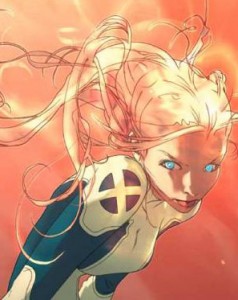 Amara Aquilla a.k.a Magma
Amara Aquilla a.k.a Magma
Milestone Met: Intellectual/Cognitive Growth
Superpower: Control of local seismic activity, lava and flame
Amara’s an interesting kid whose history has been told and retold in the last 20 years. When I first met her, she was a beautiful, yet awkward immigrant from a small island with a backward, Romanesque culture. Just go with it. She was “very self absorbed” as Erikson would note, and concrete thinking. Amara the adult seems equally strong willed, but now tempered with the ability to see things in shades of grey—as with caring for her recently blinded, once boyfriend despite him trying to, and vowing to kill her friends.
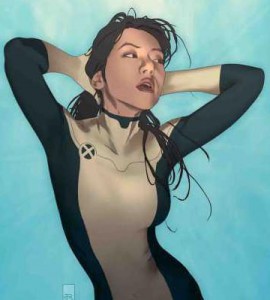 Xi’an Coy Mahn a.k.a. Karma
Xi’an Coy Mahn a.k.a. Karma
Milestone Met: Peer Group Differentiation
Superpower: Mind control and random (plot device) telepathy
Xi’an, or “Shan” as everyone called her—so that we youngsters could pronounce what we read—is from Viet Nam. Xi’an had a difficult time connecting with the core group because most of her attention was absorbed by her search for her missing brother and sister. Shan was often seen trying to fit in with the other New Mutants, or connect with her family. Both could be seen as differentiation issues since a paramount conflict in that category is the social role of self as a non-sexual child verses the emerging role as a sexual adolescent. Shan differentiated pretty solidly, on Erikson’s scale, when she embraced her homosexuality and became “one of the first major lesbian characters in a mainstream comic book,” according to Wikipedia.
 Danielle Moonstar a.k.a Mirage
Danielle Moonstar a.k.a Mirage
Milestone Met: Realization of own Limitations and Mortality (within Identity Development)
Superpower: Currently lost her powers, once dream/nightmare manifestation
It’s felt like Dani Moonstar never had a moment of obscurity in the last 20 years. She’s been a member of multiple super teams on both sides of the moral divide, been an overt and covert government operative and faced death countless times. Dani is currently facing life without her mutant powers, as the result of a global hex on 99% of all mutants. Dani has already had to prove her prowess to Sam, her former co-leader of the group, and has learned to make up for her limitations and mortality by using guns, armor, and cars in her defense.
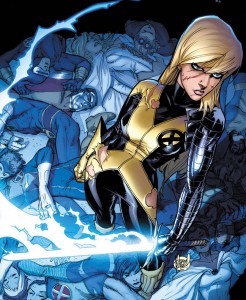 Illyana Rasputin a.k.a. Magik
Illyana Rasputin a.k.a. Magik
Milestone Met: Autonomy
Superpower: Teleportation, Black Magic
Every group needs its misunderstood, brooding rebel “bad kid.” That’s Illyana. Also, I loved her teenage character so much, I named my daughter after her. Illyana had a ton of reasons to feel misunderstood and to brood, but Erikson would argue that some of the rebelliousness was simply her autonomic identity vying for life. We go from feeling lonely, with wild mood swings and challenging authority, to establishing our emerging independence, and finally with being emancipated, from our families and also from our child-selves, into an adult lifestyle that fosters our positive self image. Illyana gave a few clues in these first eight issues, that she had done a great deal of that. She seems to have embraced herself, if not all of her demons.
I’ve met my old friends again. I’m pleased with how they’ve grown. But this criteria is not for comic book characters; it’s for life. Feel free to use the chart as a self-exploration tool. Are you really a grown up? Maybe plot some of your friends on it and send them emails that say “Way to go on your positive Identity Development!” If you are the parent of a teen, maybe use it to take heart and realize much of what you’re seeing is natural and healthy. Unless they’re a Demon Princess. Or an evil corporate heir. Or a Valkyrie. Or a one-time immortal. Or a…
I could go on and on with these kids. That’s the beauty of comic books. And the beauty of reuniting with old friends; remembering the old stories, and looking forward to the new ones. Thank you, Zeb Wells. It seems you are a friend of a friend, and I like your book very much.
K

